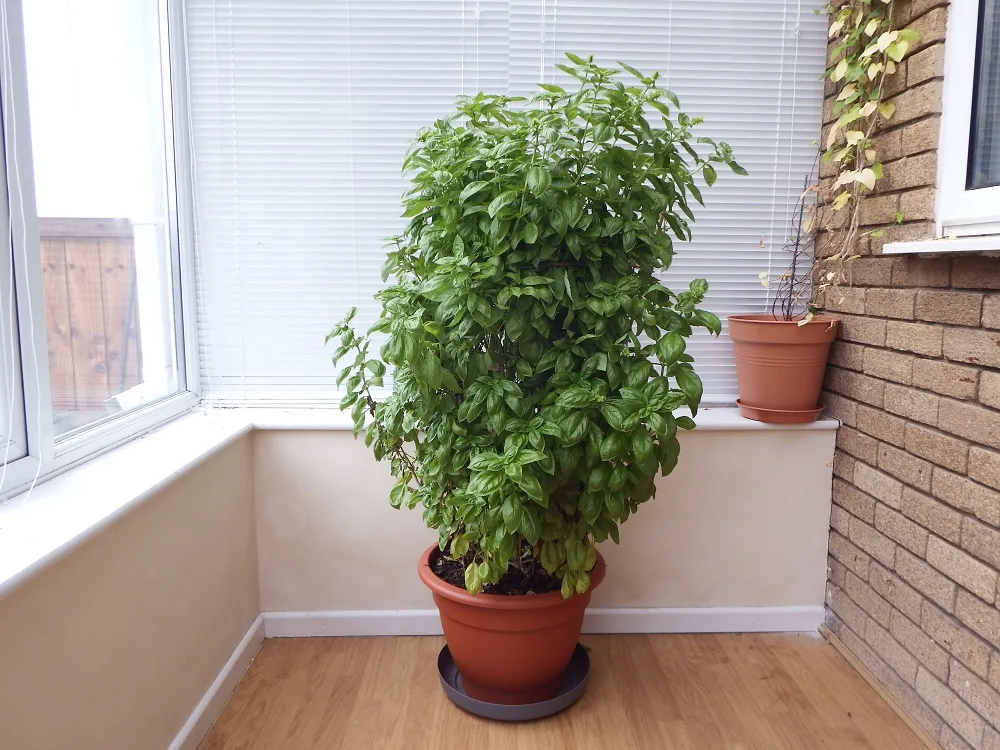
There’s nothing better than fresh herbs to flavor your food, and when the supermarket sells them in cute little pots, they’re pretty irresistible, especially for those of us who love to garden!
Have you ever brought these herbs home from the store, hoping they would supply you with fresh leaves for months, only to find they’re dead within a week?
There are a lot of reasons that supermarket herbs tend to die quickly in our homes, but with the proper knowledge, you can keep these herbs alive and use them for months or even years.
We bought a tiny potted rosemary bush from the supermarket three years ago and not only is it still thriving, but it’s also quadrupled in size! We cook with its leaves regularly and have even propagated the plant to make more rosemary bushes.
6 Tips for Keeping Supermarket Herbs Alive
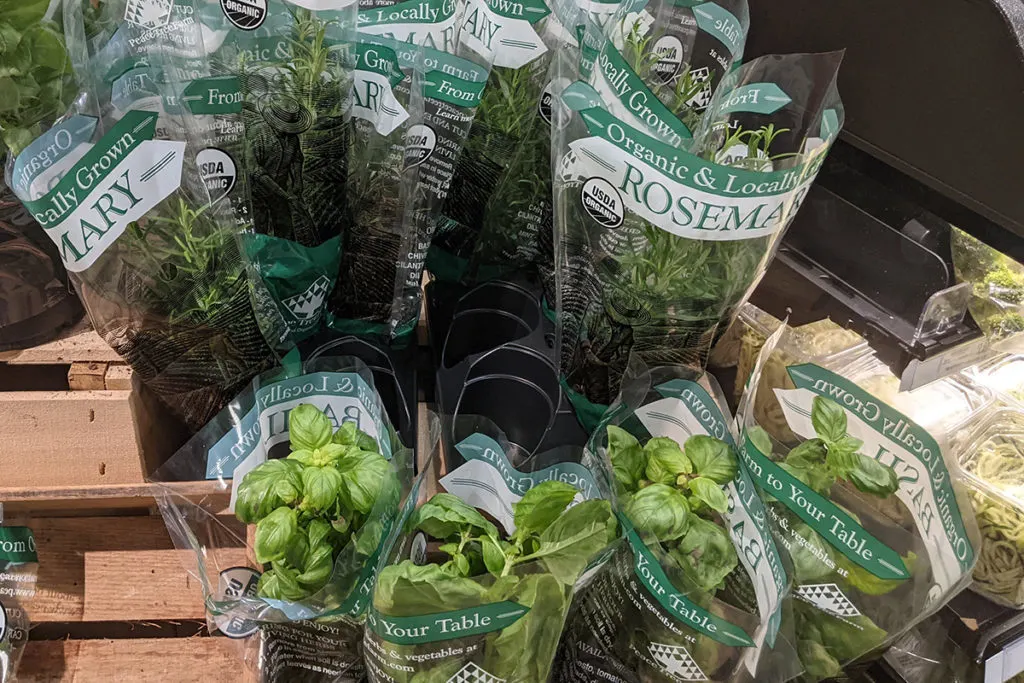
1. Pick the healthiest plants
If you want to keep your herbs alive, be sure to choose the very best ones, to begin with.
Your herbs should be free from blemishes, the leaves should be vibrant green, not yellow or brown. Check them over for flowers, if you see any flowers on the herbs, don’t bother bringing those home, they’re already at the end of their life cycle.
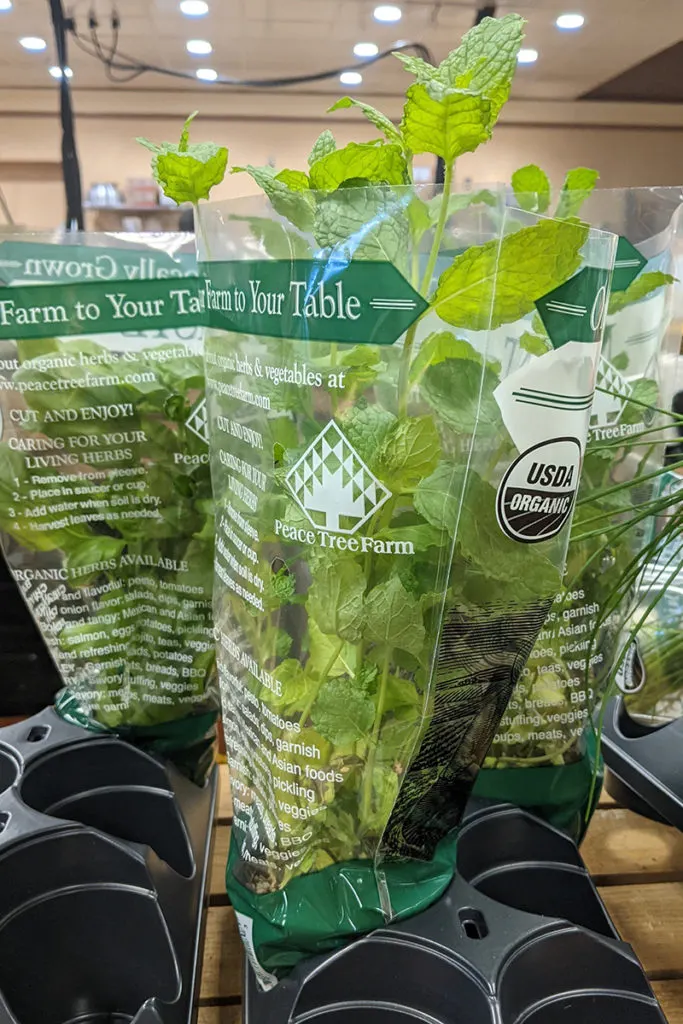
Make sure the herbs you buy aren’t wilted or overgrown. Tall, lanky plants are likely already starved for light and won’t live for much longer. Wilted plants are stressed, and many don’t recover.
If you can start off with healthy plants, you have a much better chance of keeping them alive.
2. Get them into a new pot
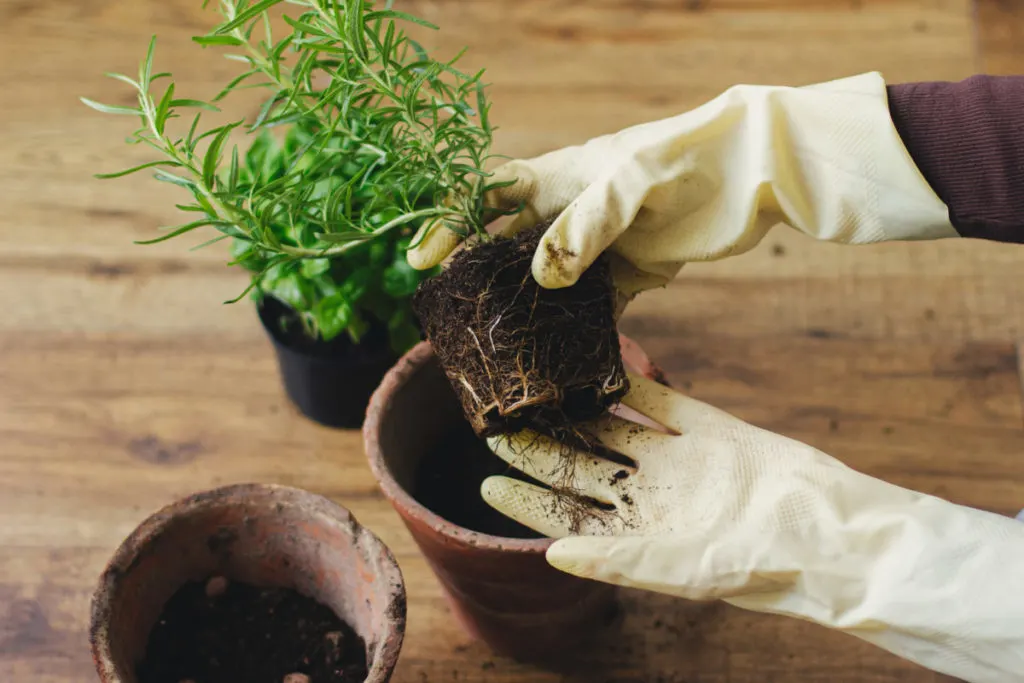
Whether you bought herbs already growing in soil, or bought herbs that were grown hydroponically and have bare roots, the most important first step is to get them into a nice new pot with fresh potting soil.
Supermarket herbs are grown quickly and are meant to be used quickly as well. They won’t survive for long in the pot they came in.
These herbs are almost always root bound, and are struggling to survive in a pot that’s too small. The sooner you can get them into a roomier home, the better.
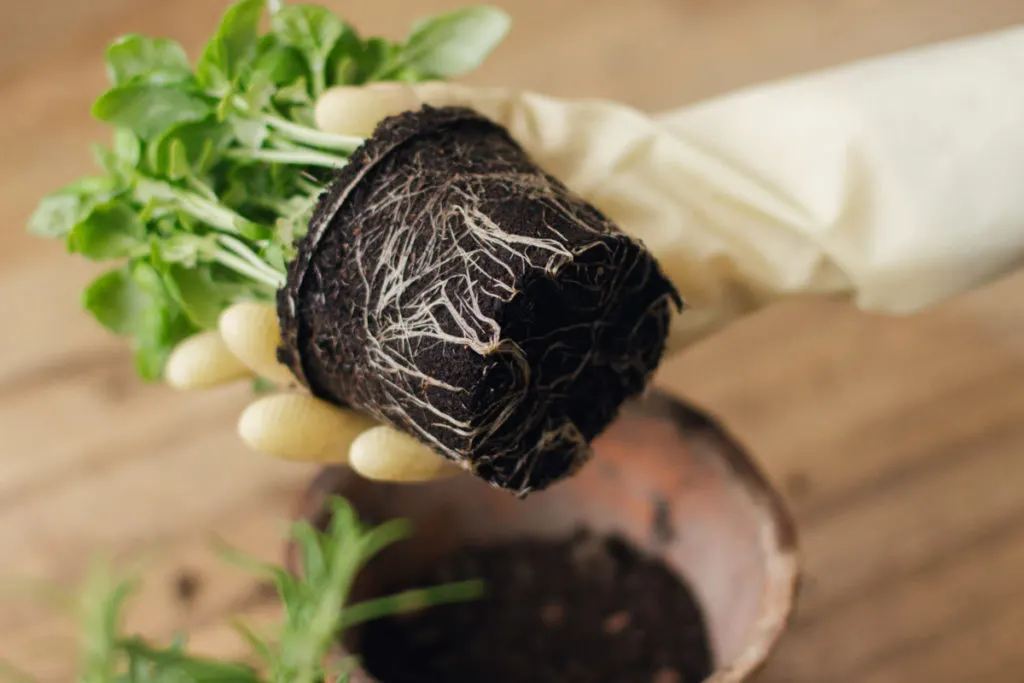
Make sure to re-pot them into fresh potting soil, not garden soil. We love to use organic potting soil for growing edible plants because it’s free from herbicides and pesticides, and full of organic matter that plants thrive on.
You may also need to thin the plants while you’re re-potting them, separating them into several different pots. Most of the time these herbs have been crammed into a single pot to make them look more full, but they’re way overcrowded. Spreading them into several different pots gives each plant more nutrients and light.
Do make sure whichever pot you choose has good drainage so excess water can run out the bottom.
3. Water them regularly
Were the herbs you bought grown hydroponically? You can usually tell because they came with bare roots.
These herbs are significantly more difficult to keep alive at home, but not impossible.
The most important thing to remember about hydroponic herbs is that they’re used to their roots being submerged in water at all times. When you put the roots into the soil, the plant can go into shock and quickly die.
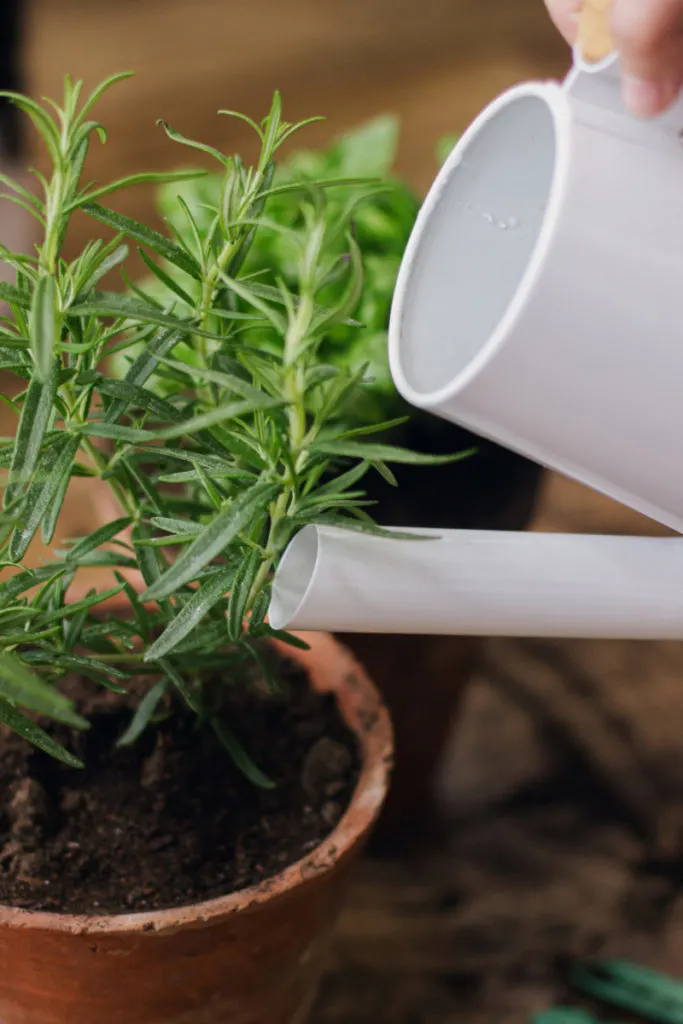
To make the transition to a potted life easier on the plant, you need to water it every day or every other day for the first few weeks.
It’s extra important to make sure your pot has good drainage in the bottom so excess water can run out. Water the herbs daily, even if the soil is still moist from the day before.
This might go against all your gardening instincts because it’s been drilled into our heads not to water plants with moist soil, but there are different rules with hydroponic herbs.
Even if the soil is wet, keep watering at least every other day for those first few weeks while your herbs get used to being in soil. Keep in mind this tip is only for herbs that were grown hydroponically.
If your herbs came to you in potting soil, you don’t need to water them nearly as much. Stick to a regular watering routine, adding water whenever the top of the soil is dry to the touch.
4. Fertilize them
These herbs have most likely lead a pretty sad life.
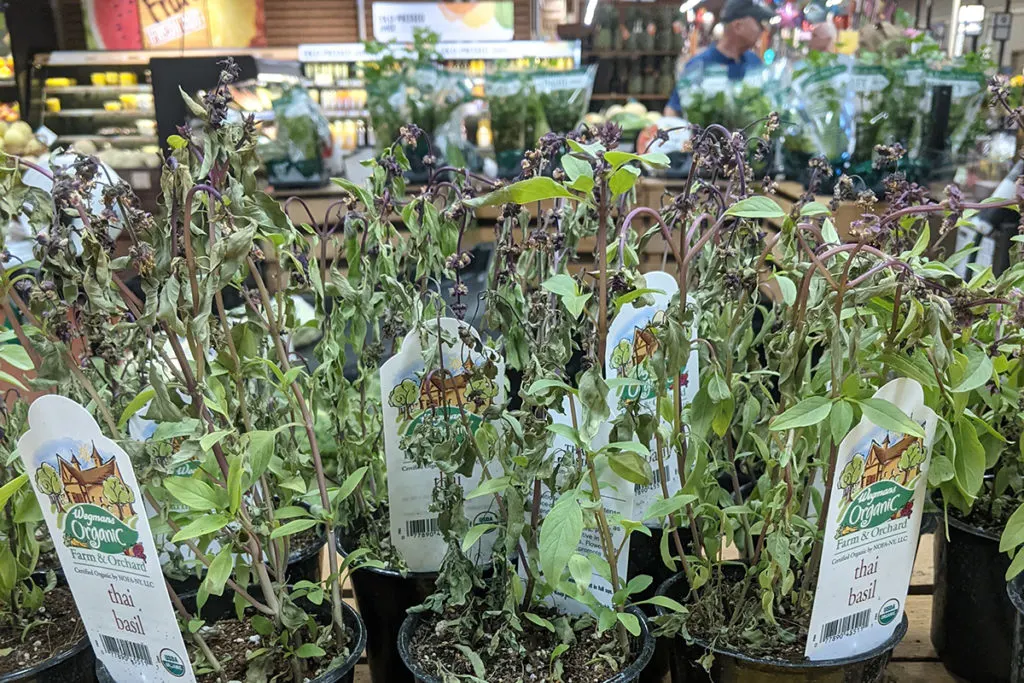
They’ve been growing in a too-small pot and have been cared for by supermarket employees who likely don’t know a lot about plant care.
Most supermarket herbs are starved for nutrients, so it’s a good idea to fertilize them. We usually wait until a week after we’ve repotted the herbs. This gives them time to get accustomed to their new surroundings before adding in a fertilizer regiment.
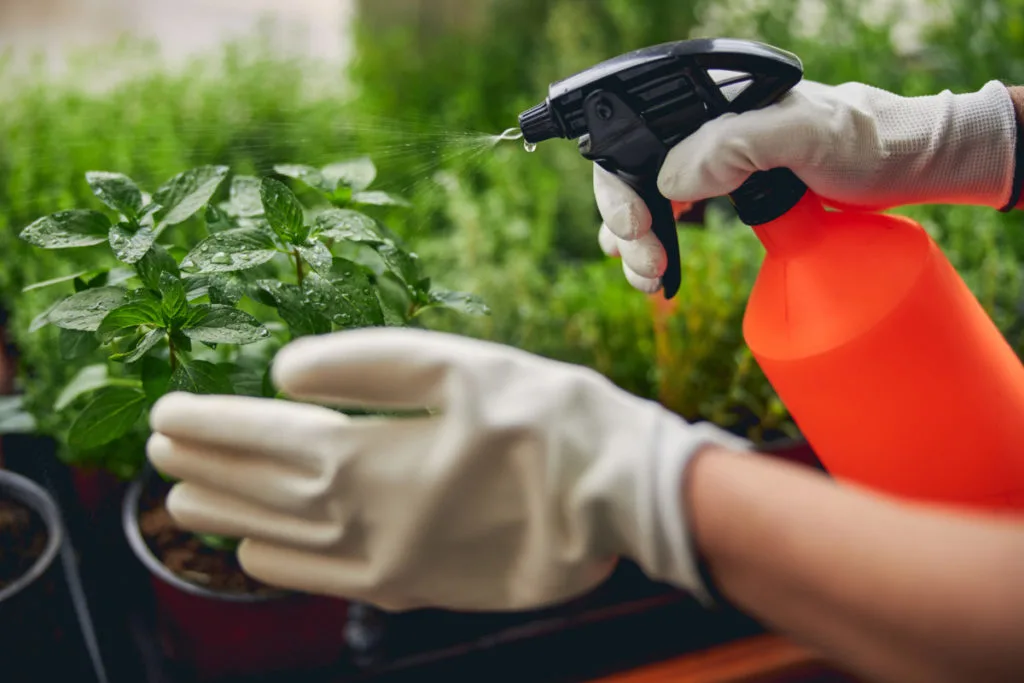
We use organic fertilizer, which we sprinkle on the soil, and also use a foliar spray every few months.
5. Provide proper sun or lighting
The herbs you bought at the supermarket were grown in optimal lighting, this includes either living in a greenhouse with lots of natural light or growing under grow lights.
Either way, they’ve had all the light they need to thrive up until they were shipped to the supermarket then came home with you. Failing to give these plants enough light is one of the biggest reasons they die when you get them home.
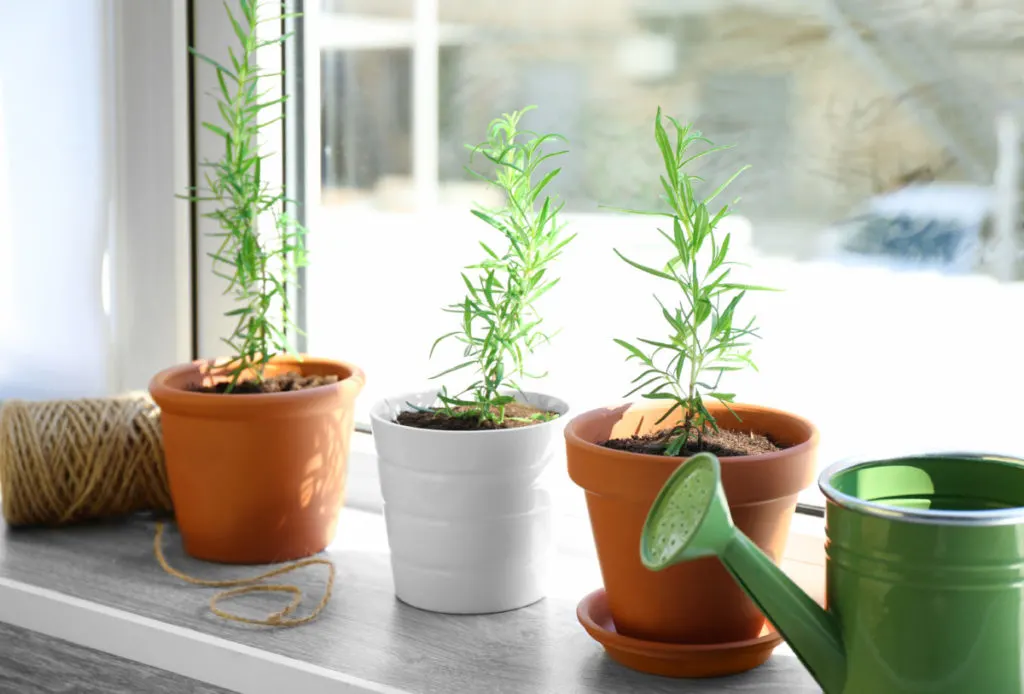
We’ve found proper lighting to be the single most important factor in keeping supermarket herbs alive. Due to the fact that we get minimal sunlight here in Western New York, we supplement with grow lights to keep our herbs alive indoors.
You can find excellent grow lights online in all shapes and forms. Our favorite is the UFO grow light that you can hang from the ceiling. It casts a wide ray of light so you can put multiple plants underneath it, and it’s just fun to look at!
Be sure to look up the specific lighting needs of your herbs, some love to be in full sun, others like filtered or indirect lighting. Most herbs will benefit from sitting in a South-facing window in your home.
6. Prune the herbs regularly
Some herbs really benefit from pruning regularly. Flower buds should be trimmed off immediately, before they’re allowed to bloom. When herbs are allowed to flower, they quickly lose their flavor and the plant will die, having completed its natural cycle.
If you trim off the flower buds every time they pop up, the plant will continue to grow.
Basil is an especially tough plant to keep alive, it’s fragile and sensitive to changes in light, water, and temperature. Basil also needs to be pruned regularly in order to really thrive.
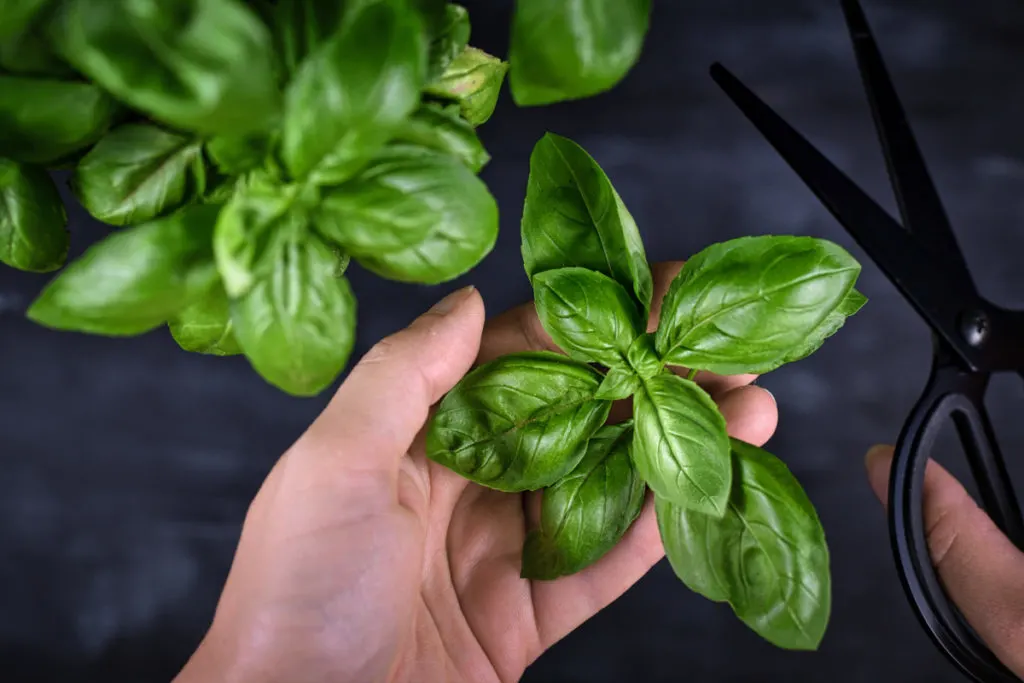
Many people kill their supermarket basil too quickly by pruning off leaves the wrong way. You should never pluck off the large bottom leaves, as the plant needs these to survive.
Instead, always trim off the top leaves, this will encourage the basil to branch out and make even more leaves. Don’t miss this post that shows you exactly how to prune basil the right way, I promise it’s totally life-changing!
Following these six tips should help you keep your supermarket herbs alive for much longer, so you can really get your money’s worth. If you want to take it one step further, you can propagate these supermarket herbs and double or triple your harvest!
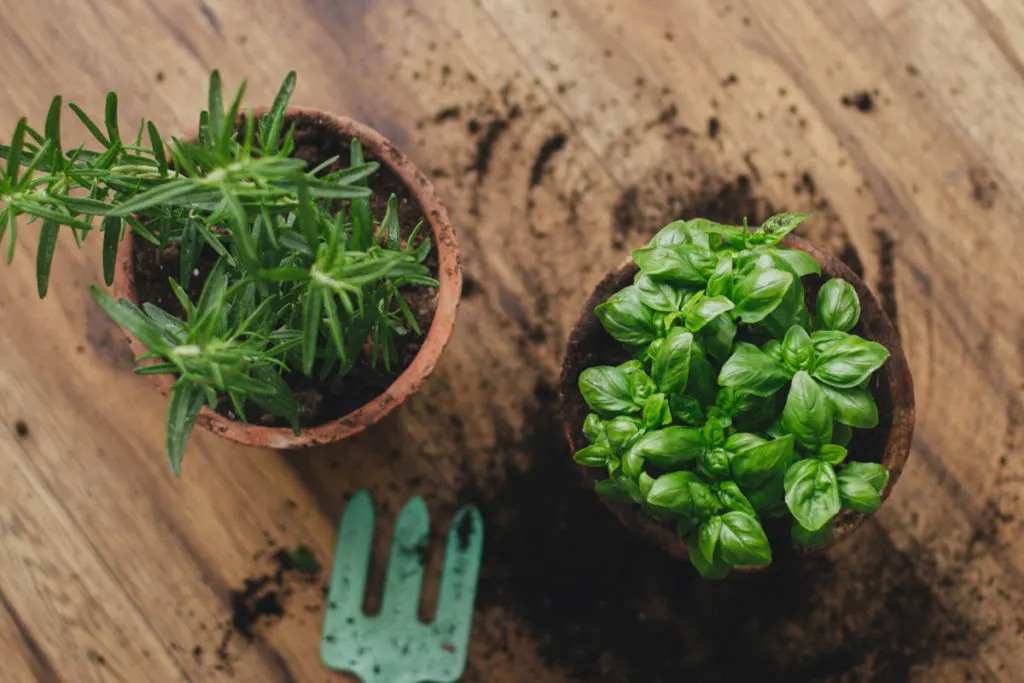
Read Next:

Get the famous Rural Sprout newsletter delivered to your inbox.
Including Sunday ramblings from our editor, Tracey, as well as “What’s Up Wednesday” our roundup of what’s in season and new article updates and alerts.


